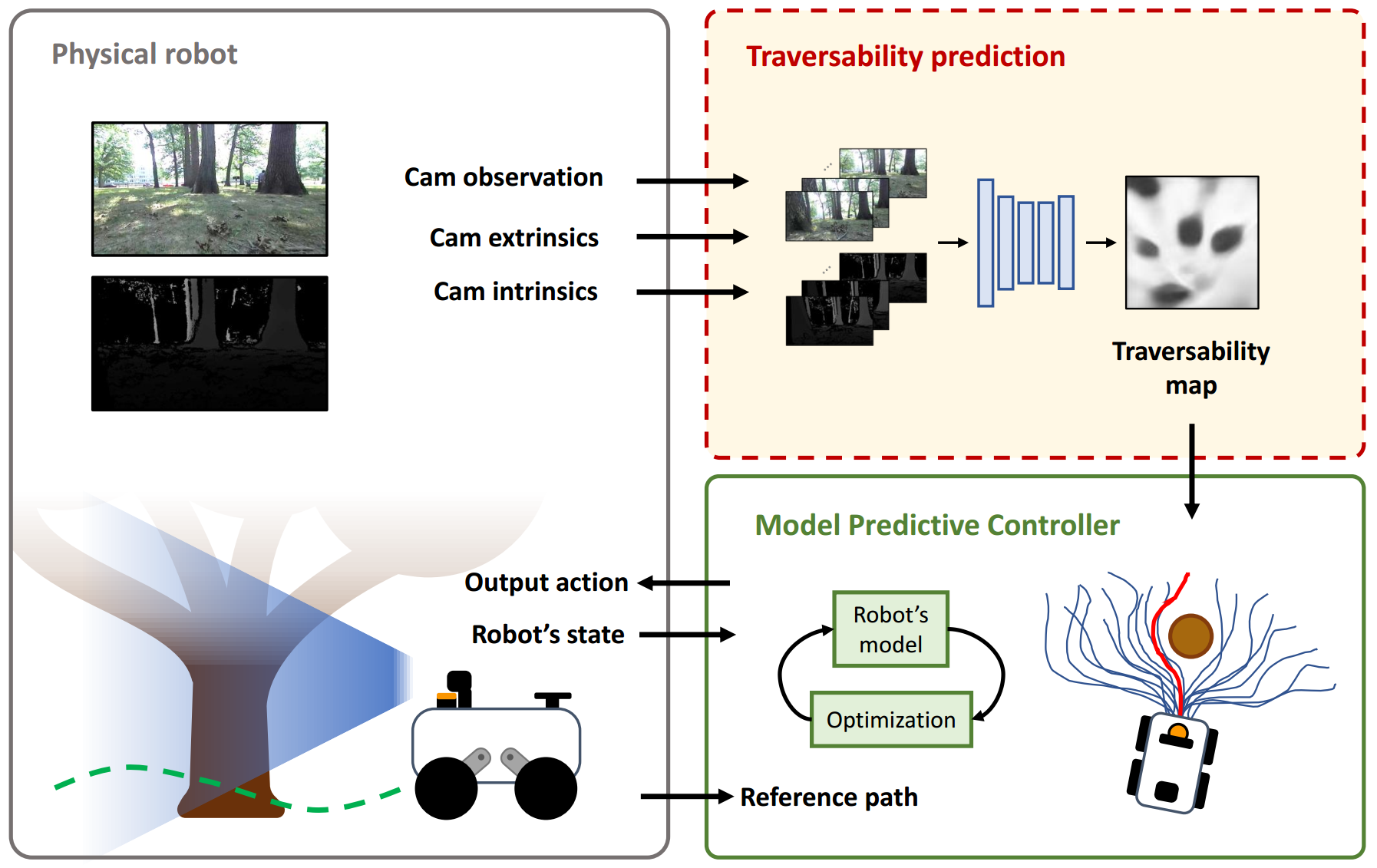Accurate and robust navigation in unstructured environments requires fusing data from multiple sensors.
Such fusion ensures that the robot is better aware of its surroundings, including areas of the environment
that are not immediately visible, but were visible at a different time. To solve this problem, we propose
a method for traversability prediction in challenging outdoor environments using a sequence of RGB and depth
images fused with pose estimations. Our method, termed WayFASTER (Waypoints-Free Autonomous System for
Traversability with Enhanced Robustness), uses experience data recorded from a receding horizon estimator
to train a self-supervised neural network for traversability prediction, eliminating the need for heuristics.
Our experiments demonstrate that our method excels at avoiding geometric obstacles, and correctly detects that
traversable terrains, such as tall grass, can be navigable. By using a sequence of images, WayFASTER significantly
enhances the robot's awareness of its surroundings, enabling it to predict the traversability of terrains
that are not immediately visible. This enhanced awareness contributes to better navigation performance in
environments where such predictive capabilities are essential.


